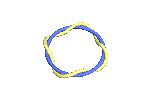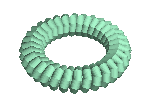Previously we reviewed the amazing ZapFab 3D print service, in which users are permitted to post their own designs and have them used or even modded by others. The interesting bit we noticed was that we can browse the entire library of models stored at ZapFab and that includes seeing not only a pretty picture, but also the price to print it.
We got a very strange feeling after looking at several models and their associated print prices. Let’s take a look at a couple of ZapFab objects to understand what we’re trying to explain:
 This basic item, the “Blue and Yellow Twisted Loop” is priced at a mere £9.30 (USD$18.5).
This basic item, the “Blue and Yellow Twisted Loop” is priced at a mere £9.30 (USD$18.5).
 Meanwhile, the “Dense Green Spiral” is priced at a mere £2,162.76 (USD$4,307)!
Meanwhile, the “Dense Green Spiral” is priced at a mere £2,162.76 (USD$4,307)!
What does this mean? We were momentarily shaken out of our chair when we saw the price of the Spiral. Later, when we regained consciousness, it was clear what happened.
It’s like this: today when we shop in a store for an object (say, an ashtray), we mentally price it based on the value of usage we’ll get from the object. When we shop for commodities (say, a sack of onions), we mentally price them based on their weight or volume.
ZapFab breaks through a mental barrier by forcing users to price objects by volume, as if they were commodities. Manufactured goods become commodities – at least in our minds, if not reality.
3D printing truly makes objects a commodity. Really, it does! You need only look through the ZapFab library and after a few moments browsing you find yourself thinking about objects in terms of volume, not function.

